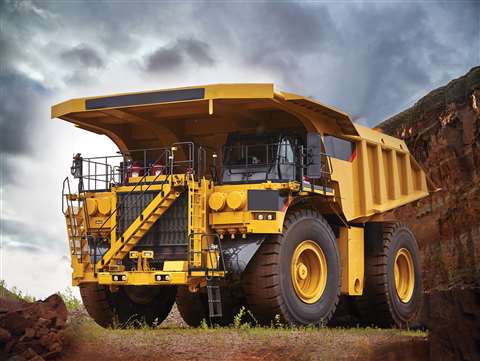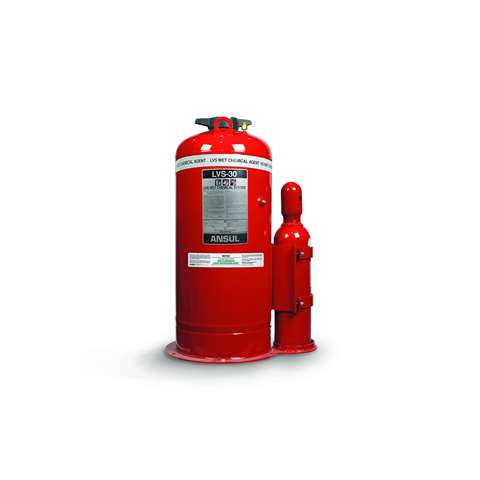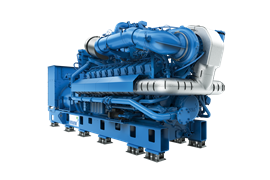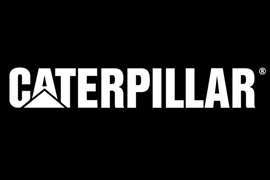Vehicle fire suppression agent goes green
13 October 2021
Global regulations are driving demand for a new vehicle fire suppression agent.
 Large off-road diesel vehicles often run at high temperatures around the clock in remote areas
Large off-road diesel vehicles often run at high temperatures around the clock in remote areas
Protecting work vehicles from potential fire events is critical for construction, mining and forestry jobsite safety. Large off-road diesel vehicles often run at high temperatures around the clock in remote areas. During these intense operating periods, combustible materials can sometimes ignite on the vehicle, often initiated when oil or other fluid leaks and sprays onto a hot metal surface. A fire can then quickly engulf one of these vehicles, creating a safety hazard for workers and risking damage to the high-value equipment.
Onboard fire suppression systems have become a critical part of helping to protect these vehicles and incorporating the right fire suppression agent in that system has become more important than ever. In selecting an agent, it is important for decision makers to consider the increasing number of global regulations that potentially restrict the use of per- and poly-fluorinated alky substances (PFAS), commonly referred to as fluorosurfactants.
Fluorosurfactants are synthetic chemical compounds introduced in the 1940s, but there are now regulations in place or proposed that limit their use. This shift will mark a transition to an era of vehicle fire suppression agents that must meet sustainability regulations while still effectively and efficiently protecting operators and equipment.
The new regulatory landscape creates an opportunity for manufacturers to improve other key agent characteristics such as performance and application methods. Understanding these important factors will help industrial worksite teams select the most appropriate agent for their diesel vehicle protection needs.
Meeting environmental goals
Industries such as forestry, mining, construction, metal processing, waste management and recycling operate in a broad range of environments and remote locations. These industries typically employ onboard vehicle fire suppression solutions since traditional firefighting methods are often inaccessible. Onboard fire suppression systems are commonly found on high-value, large-scale machines such as graders, loaders, bulldozers, mine haul trucks, excavators, skidders, cranes, diesel generators and other equipment.
Liquid vehicle suppression agents manufactured without fluorosurfactants have significantly less persistence in the environment. By offering reduced persistence, an agent made without fluorosurfactants may be deployed in areas with restrictive environmental regulations.
 ANSUL non-fluorinated liquid vehicle suppression (LVS) agent that uses a blend of organic salts and surface-active ingredients.
ANSUL non-fluorinated liquid vehicle suppression (LVS) agent that uses a blend of organic salts and surface-active ingredients.
Fire suppression performance
“An unchecked vehicle fire on these types of large, heavy-duty equipment could have devastating impact on the environment as well as the ongoing operation,” said Alden Spencer, global product manager, ANSUL Vehicle Systems. “This makes quick and thorough fire knockdown critical. Modern onboard vehicle fire protection systems automatically detect and douse flames with a dry chemical, foam or liquid suppression agent. Many chemical agents use fluorosurfactant-based chemicals to enable the fire to be extinguished as quickly as possible. Until recently, many non-fluorinated suppression agents have underwhelmed in terms of firefighting performance. Some products use dry chemical (powder agents) that do not offer any degree of cooling, which risks fire re-ignition even after it appears to be under control.”
To address the performance challenges often found with non-fluorinated suppression agents, Johnson Controls said it formulated and introduced a new ANSUL non-fluorinated liquid vehicle suppression (LVS) agent that uses a blend of organic salts and surface-active ingredients. The company said the new LVS agent can provide the suppression, cooling and securing properties needed for vehicle fire protection without the addition of fluorosurfactants in the manufacturing process.
“In field tests, this non-fluorinated LVS agent provides rapid flame knockdown and surface cooling on Class A and Class B fires,” said Spencer. “To maximize effectiveness, suppression and cooldown actions happen quickly, thereby protecting crew members, equipment, nearby assets, and the immediate environment while also preventing a re-flash of the fire. The quick knockdown also helps to minimize fire damage to the vehicle, allowing a quicker return to service after an incident.”
 “To maximize effectiveness, suppression and cooldown actions happen quickly, thereby protecting crew members, equipment, nearby assets and the immediate environment while also preventing a re-flash of the fire,” said Alden Spencer, Global Product Manager, ANSUL Vehicle Systems.
“To maximize effectiveness, suppression and cooldown actions happen quickly, thereby protecting crew members, equipment, nearby assets and the immediate environment while also preventing a re-flash of the fire,” said Alden Spencer, Global Product Manager, ANSUL Vehicle Systems.
The liquid base of the ANSUL non-fluorinated LVS agent is a crucial element in its effectiveness, said the company. First, the liquid formulation quickly cools surrounding surfaces to minimize re-flash potential.
While dry chemical systems are available and effective in many fire suppression applications, those that include super-heated surfaces, such as industrial diesel vehicles, must include wet-chemical cooling properties. In certain applications where a fire can create Class A deep-seated embers, wet chemical deployment penetrates crevasses and seams that might otherwise harbor still-hot debris.
Improved method of application
“To achieve optimum fire protection of industrial off-road diesel vehicles, the method of agent application can be just as important as the agent itself,” said Spencer. “In today’s most effective systems, thermal linear detectors and liquid agent discharge nozzles are mounted in critical areas of the vehicle where fires are most likely to occur.”
The vehicle fire suppression system’s actuation module, which receives signals from the detection wires, alerts the operator of a potential fire danger and activates the suppression agent automatically when a heat flash is detected in specific areas. These systems also offer manual activators along paths of egress, so the operator can activate the system while exiting the vehicle, if needed. Upon deployment from a central tank, the agent forms a cool, liquid blanket to suppress the oxygen feeding the fire.
A modern onboard vehicle fire protection system should also offer a simple method of agent re-filling and re-charging to reduce operational downtime. This is achieved with the new ANSUL LVS system by offering customers premixed agent containers and external pressure charges so there is no measuring or guessing for the team in the field. The ANSUL non-fluorinated LVS agent requires changeout only at routine tank pressure tests intervals, said the company, reducing the overall cost of ownership by eliminating the need for annual agent testing.
Protection into the future
“The shift to liquid vehicle suppression agents manufactured without fluorosurfactants marks an era in which heavy diesel vehicle operators can have confidence in the uncompromised performance of their fire protection solution while addressing the changing regulatory landscape,” said Spencer. “When selecting a vehicle protection system and agent, decision makers should consider what their local regulatory landscape will look like in the near future and understand the role an agent plays in keeping their operations safe, compliant and profitable for years to come.”
This article originally appeared in the September 2021 issue of Diesel Progress.
POWER SOURCING GUIDE
The trusted reference and buyer’s guide for 83 years
The original “desktop search engine,” guiding nearly 10,000 users in more than 90 countries it is the primary reference for specifications and details on all the components that go into engine systems.
Visit Now
STAY CONNECTED




Receive the information you need when you need it through our world-leading magazines, newsletters and daily briefings.
CONNECT WITH THE TEAM













